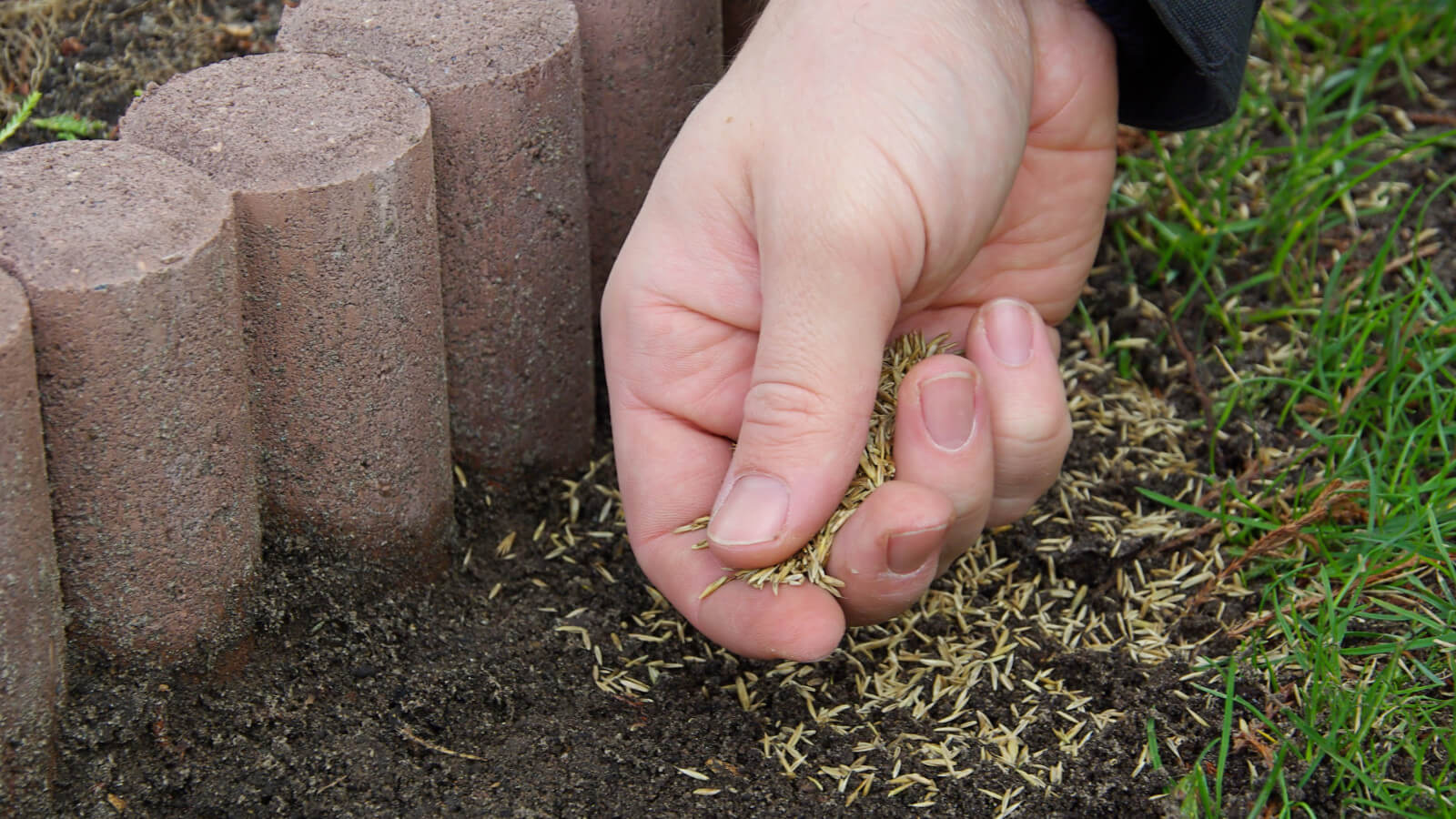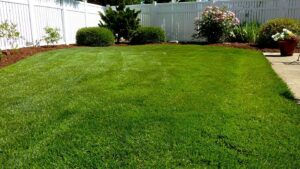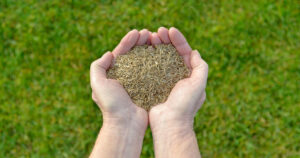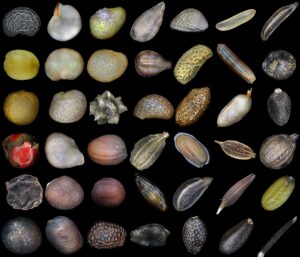How Much Grass Seed Do I Need: The Complete Guide to Perfect Coverage
Creating a beautiful, lush lawn starts with the fundamentals—applying the right amount of grass seed. Whether you’re establishing a new lawn from scratch, overseeding thin areas, or renovating a tired landscape, calculating the correct seed quantity is crucial for success. Too little seed results in patchy growth and weed invasion, while too much leads to overcrowding, disease issues, and wasted resources. This comprehensive guide will walk you through everything you need to know about calculating grass seed requirements for your specific project, ensuring optimal results with maximum efficiency.
Why Precise Seed Calculation Matters
Before diving into the calculations, it’s important to understand why accurate seed measurement is essential for lawn success:
- Even Coverage: Proper seed distribution prevents bare spots and ensures uniform growth.
- Resource Efficiency: Buying the right amount saves money and prevents waste.
- Seedling Health: Appropriate seeding rates allow individual grass plants enough space to develop strong root systems.
- Reduced Competition: Prevents overcrowding that can lead to weak growth and increased disease susceptibility.
- Weed Prevention: Dense, even turf naturally crowds out unwanted weeds.
Understanding Grass Seed Coverage Rates
Grass seed application rates vary significantly depending on the type of grass and project. Here’s what you need to know about standard coverage rates:
How Many Pounds of Grass Seed Per 1,000 Square Feet
Different grass varieties have specific seeding requirements based on seed size, germination rates, and growth habits:
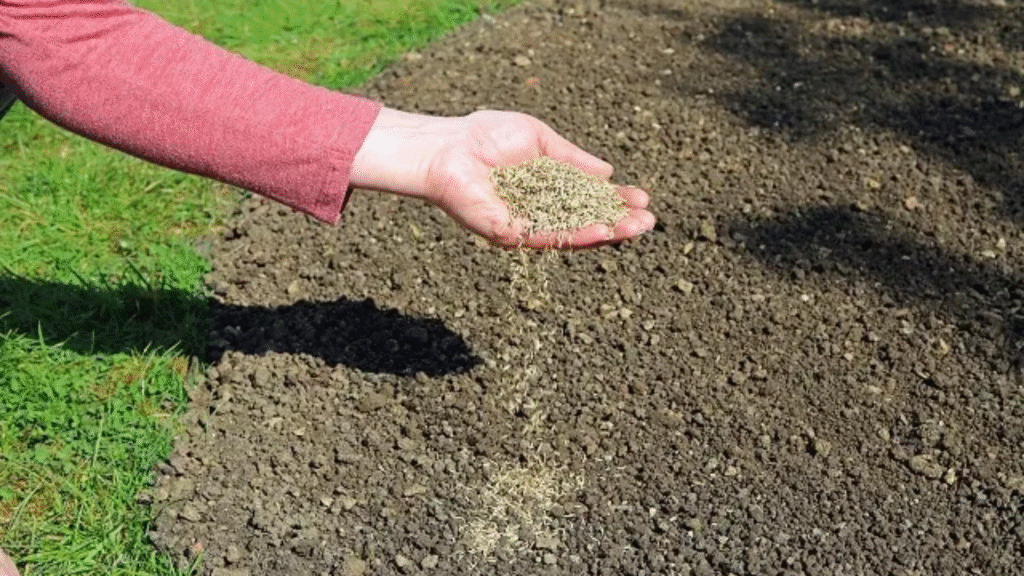
Calculating Your Lawn Area: The First Step
Before you can determine how much seed to purchase, you need to measure your lawn accurately.
Basic Area Calculations
For square or rectangular areas:
- Area = Length × Width
For circular areas:
- Area = π × radius²
- (or approximately 3.14 × radius × radius)
For irregular lawns:
- Divide your yard into simple shapes (rectangles, squares, circles)
- Calculate each area separately
- Add all measurements for total square footage
Tips for Accurate Measurement
- Use Proper Tools: A long measuring tape (100 ft) or laser measuring device provides the most accurate results.
- Account for Non-Lawn Areas: Subtract areas you won’t be seeding, such as:
- Garden beds
- Driveways and walkways
- Patios and decks
- Structures and buildings
- Document Measurements: Sketch your property and record measurements for each section.
- Online Tools: Consider using satellite imagery-based tools that can help calculate your lawn area.
How Much Grass Seed Calculator: Step-by-Step
Follow this simple process to determine exactly how much seed you need:
Step 1: Determine Your Total Lawn Area
Calculate your lawn’s square footage as described above.
Step 2: Identify Your Grass Type
Select the appropriate grass species based on your climate zone, sun exposure, and intended lawn use.
Step 3: Determine Project Type
Are you establishing a new lawn, overseeding, or repairing bare patches?
Step 4: Add a Buffer
Add 10% extra to account for:
- Measurement errors
- Uneven distribution
- Areas requiring thicker coverage
Example Calculation
For a new 5,000 sq ft lawn using Kentucky Bluegrass:
- Area: 5,000 sq ft
- Grass Type: Kentucky Bluegrass
- Project Type: New lawn (seeding rate: 2-3 lbs per 1,000 sq ft)
- Calculation: (5,000 ÷ 1,000) × 2.5 = 12.5 lbs
- With 10% buffer: 12.5 × 1.1 = 13.75 lbs
Therefore, you would need approximately 14 pounds of Kentucky Bluegrass seed.
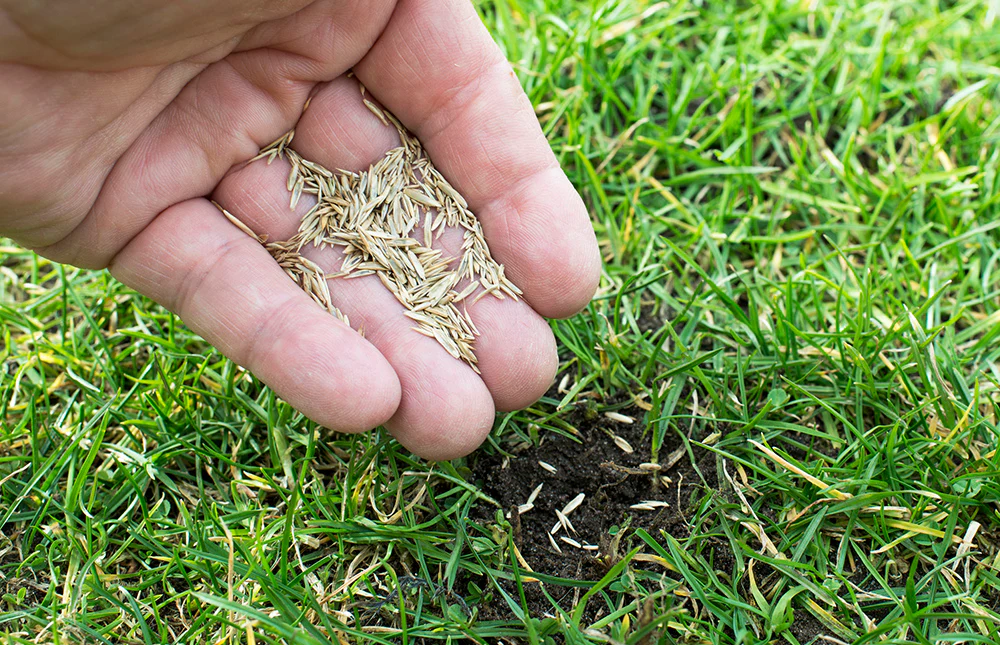
Lowe’s Grass Seed Calculator and Other Online Tools
Major retailers and lawn care companies offer online calculators to simplify the process:
Benefits of Using Online Calculators
- Automatic Conversions: No need to perform manual calculations
- Specific Recommendations: Tailored to grass species and project type
- Product Suggestions: Recommendations for appropriate seed varieties
- Additional Requirements: Often calculates related needs (fertilizer, soil, etc.)
Popular Online Grass Seed Calculators
- Lowe’s Grass Seed Calculator
- User-friendly interface
- Product-specific recommendations
- Additional materials calculator
- Available on their website or in-store app
- Scotts® Lawn Size Calculator
- Satellite imagery integration
- Comprehensive product recommendations
- Multi-project planning features
- Pennington Seed Calculator
- Grass-type specific calculations
- Regional recommendations
- Includes timing guidelines
Using Online Calculators Effectively
- Have your measurements ready before starting
- Be precise about your grass type and project needs
- Verify recommendations against standard seeding rates
- Consider local growing conditions that may affect rates
Grass Seed Per Acre Chart: Large-Scale Applications
For larger properties or commercial applications, calculating by acre is more practical.
Acre to Square Feet Conversion
For reference:
- 1 acre = 43,560 square feet
- To convert square feet to acres: Square feet ÷ 43,560
Large-Scale Seeding Considerations
When seeding large areas, additional factors come into play:
- Equipment Calibration: Ensure broadcast spreaders or hydroseeders are properly calibrated for even distribution.
- Section Planning: Divide large areas into manageable sections with markers to ensure complete coverage.
- Soil Preparation Scale: Consider equipment needs for soil preparation across larger areas.
- Erosion Control: Large areas may require additional erosion prevention measures during establishment.
- Irrigation Logistics: Ensure adequate water coverage across the entire seeded area.
Factors That May Affect Seed Quantity Requirements
Standard seeding rates provide a solid baseline, but several factors might necessitate adjustments:
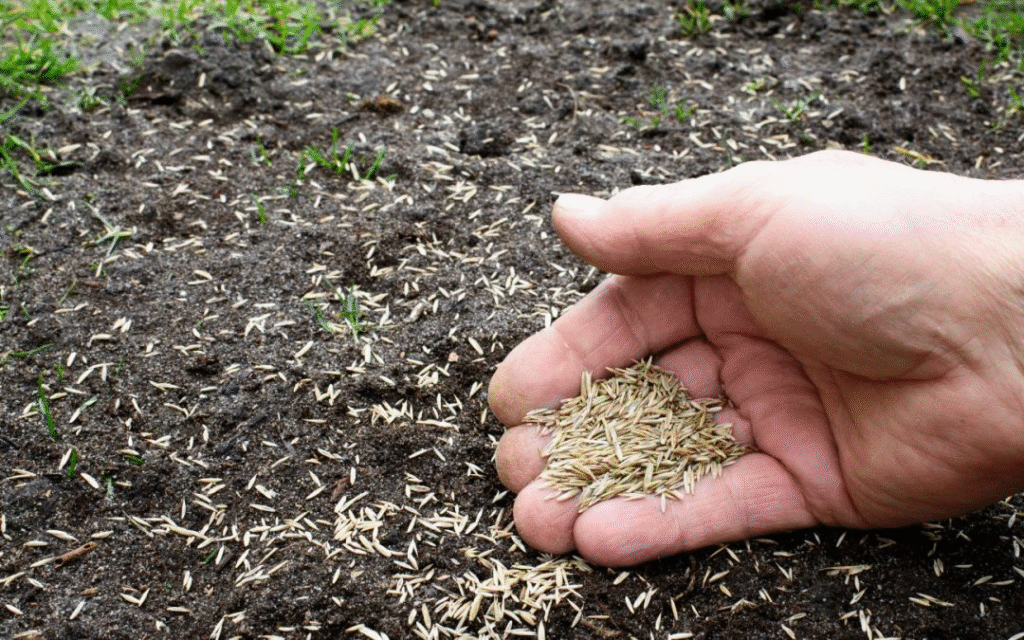
Seed Quality Factors
- Germination Rate: Higher quality seed with 90%+ germination rates may require less product than lower-quality options with 70-80% germination rates.
- Seed Purity: Mixtures containing high percentages of inert matter or non-desirable grasses may require higher application rates.
- Coatings and Treatments: Some seeds come with coatings that affect weight-to-seed ratio; check product specifications.
Environmental Considerations
- Soil Conditions: Poor soil may require higher seeding rates to ensure adequate establishment.
- Slope Severity: Steeper slopes might need 25-50% more seed to account for runoff and erosion.
- Sun/Shade Mix: Areas with varying light conditions might require specialized mixtures at different rates.
- Regional Climate Stress: Extreme climate regions might benefit from higher seeding rates to ensure adequate establishment before stress periods.
Timing Adjustments
- Late Season Seeding: When planting later in the season, consider increasing rates by 15-20% to compensate for potentially lower germination rates.
- Early Season Seeding: Ideal conditions might allow for the lower end of seeding rate recommendations.
Step-by-Step Guide to Purchasing and Applying the Right Amount
Once you’ve calculated your seed requirements, follow these steps for successful application:
1. Purchasing Tips
- Buy fresh seed from the current season
- Check germination rates on packaging (higher is better)
- Consider certified seed for premium results
- Purchase slightly more than calculated (10-15% buffer)
- Choose appropriate varieties for your region and conditions
2. Pre-Application Preparation
- Test soil and amend as recommended
- Remove debris, rocks, and dead grass
- Grade the area for proper drainage
- Loosen top 1-2 inches of soil
- Add starter fertilizer if soil test indicates necessity
3. Application Methods
Hand Broadcasting (Small Areas)
- Mix seed with sand for visibility and even distribution
- Apply half the seed walking in one direction
- Apply remaining half walking perpendicular to first application
Drop Spreader (Precision Application)
- Ideal for smaller lawns and borders
- Provides most controlled application
- Set according to manufacturer recommendations for your seed type
- Apply in a grid pattern with slight overlap
Broadcast Spreader (Larger Areas)
- Efficient for medium to large lawns
- Set spreader according to seed type specifications
- Apply in overlapping passes
- Reduce rate by 25% and make two perpendicular passes for best results
4. Post-Application Steps
- Lightly rake seed into top ¼ inch of soil
- Roll the area to ensure good seed-to-soil contact
- Apply a thin layer of mulch in exposed areas
- Water immediately with a fine spray
- Keep soil consistently moist until germination
Regional Considerations for Seed Calculation
Seed requirements can vary significantly by region due to climate differences and grass adaptations:
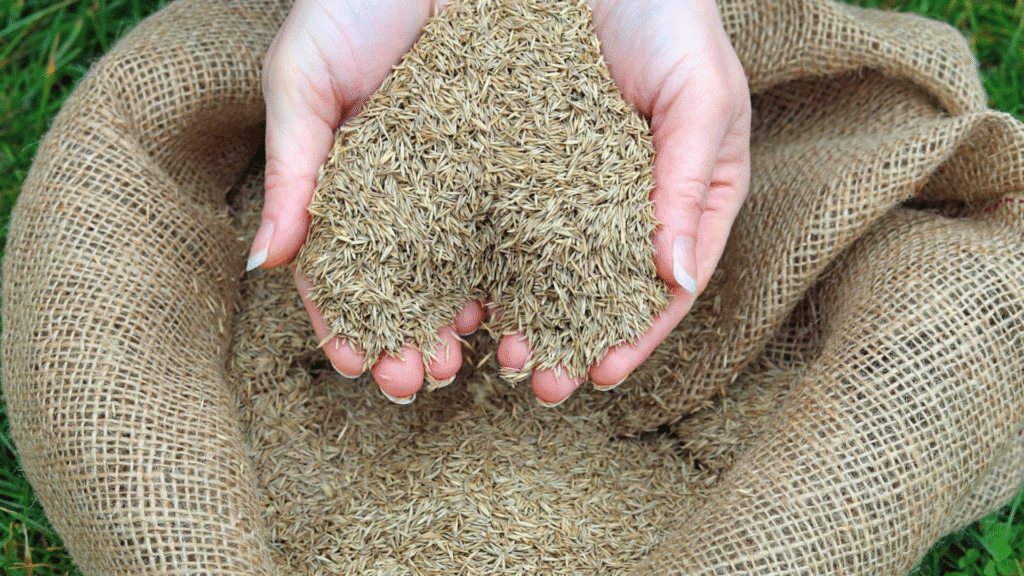
Northeast/Midwest
- Focus on cool-season grasses
- Higher seeding rates for harsh winter recovery
- Consider snow mold resistant varieties
- Fall seeding typically most successful
Southeast/Gulf Coast
- Primarily warm-season grasses
- Lower seeding rates but longer establishment periods
- Winter overseeding with ryegrass may require seasonal calculations
- Account for humidity-related disease pressure
Southwest/Arid Regions
- Drought-tolerant varieties crucial
- May require higher initial seeding in areas prone to wind erosion
- Consider specialized desert-adapted seed blends
- Account for soil salinity issues affecting germination
Pacific Northwest
- High rainfall areas may require less irrigation but more drainage
- Moss-resistant varieties often recommended
- Consider perennial ryegrass for quicker establishment in rainy seasons
- Higher fungal disease pressure may warrant preventative treatments
Transition Zone Challenges
- Most challenging region for lawns (between warm and cool zones)
- Often requires specialized seed blends
- Consider heat-tolerant cool-season grasses or cold-tolerant warm-season options
- May need seasonal overseeding strategies
Common Mistakes to Avoid When Calculating Seed Needs
Even experienced gardeners can make these common errors when planning seeding projects:
Measurement Errors
- Using rough estimates instead of actual measurements
- Forgetting to subtract non-lawn areas from calculations
- Mixing up square feet and square yards in calculations
Ignoring Seed Type Differences
- Applying general rates without considering specific grass requirements
- Not adjusting rates for seed blends with multiple species
- Overlooking coated seed weight differences
Project-Specific Miscalculations
- Using new lawn rates for overseeding projects
- Not increasing rates for difficult establishment areas
- Failing to adjust for poor soil conditions
Application Errors
- Uneven distribution during application
- Improper spreader settings
- Applying all seed in a single direction
Seasonal Timing for Maximum Success
The timing of your seeding project significantly impacts success rates and can affect how efficiently your calculated seed amount performs:
Cool-Season Grasses
- Primary Window: Early fall (4-6 weeks before first frost)
- Secondary Window: Early spring (when soil temperatures reach 50°F)
- Avoid: Summer seeding when high temperatures stress seedlings
Warm-Season Grasses
- Primary Window: Late spring through early summer
- Secondary Window: Early fall in southern regions only
- Avoid: Fall seeding in regions with winter temperatures below 50°F

Comparing Seed Application to Sod Installation
Sometimes homeowners debate between seeding and sodding. Here’s how the coverage calculations compare:
Seeding vs. Sodding
- Seed: Calculated by weight per area (lbs per 1,000 sq ft)
- Sod: Calculated by area (square feet or square yards)
Cost Comparison Example (5,000 sq ft lawn)
- Seeding: 15-25 lbs of seed ($75-150) + soil prep ($200-400) = $275-550
- Sodding: 500 sq yards of sod ($2,500-4,000) + prep ($200-400) = $2,700-4,400
Establishment Timeline
- Seeding: 1-3 weeks for germination, 4-12 weeks until usable
- Sodding: Immediate green appearance, 2-3 weeks until established
When to Choose Each Option
- Choose seeding when budget is primary concern and establishment time is flexible
- Choose sodding when immediate results are required or for difficult establishment areas
Conclusion: Investing in Proper Seed Calculations
Taking the time to accurately calculate your grass seed needs pays dividends in lawn health, appearance, and resource efficiency. By following the guidelines in this article, you’ll avoid the frustration of patchy results from too little seed or wasted resources from applying too much.
Remember these key takeaways:
- Measure Accurately: The foundation of proper seed calculation is knowing your exact lawn area.
- Know Your Grass: Different varieties have significantly different seeding requirements.
- Consider Your Project: New lawns, overseeding, and repairs each have optimal application rates.
- Account for Variables: Regional climate, soil conditions, and timing all influence seed performance.
- Follow Through: Proper preparation, application, and aftercare are just as important as calculating the right amount.
Whether you’re a DIY homeowner revitalizing your yard or a professional landscaper managing extensive properties, understanding how to calculate seed requirements precisely will help you achieve lush, healthy turf while maximizing your investment in both time and materials.
